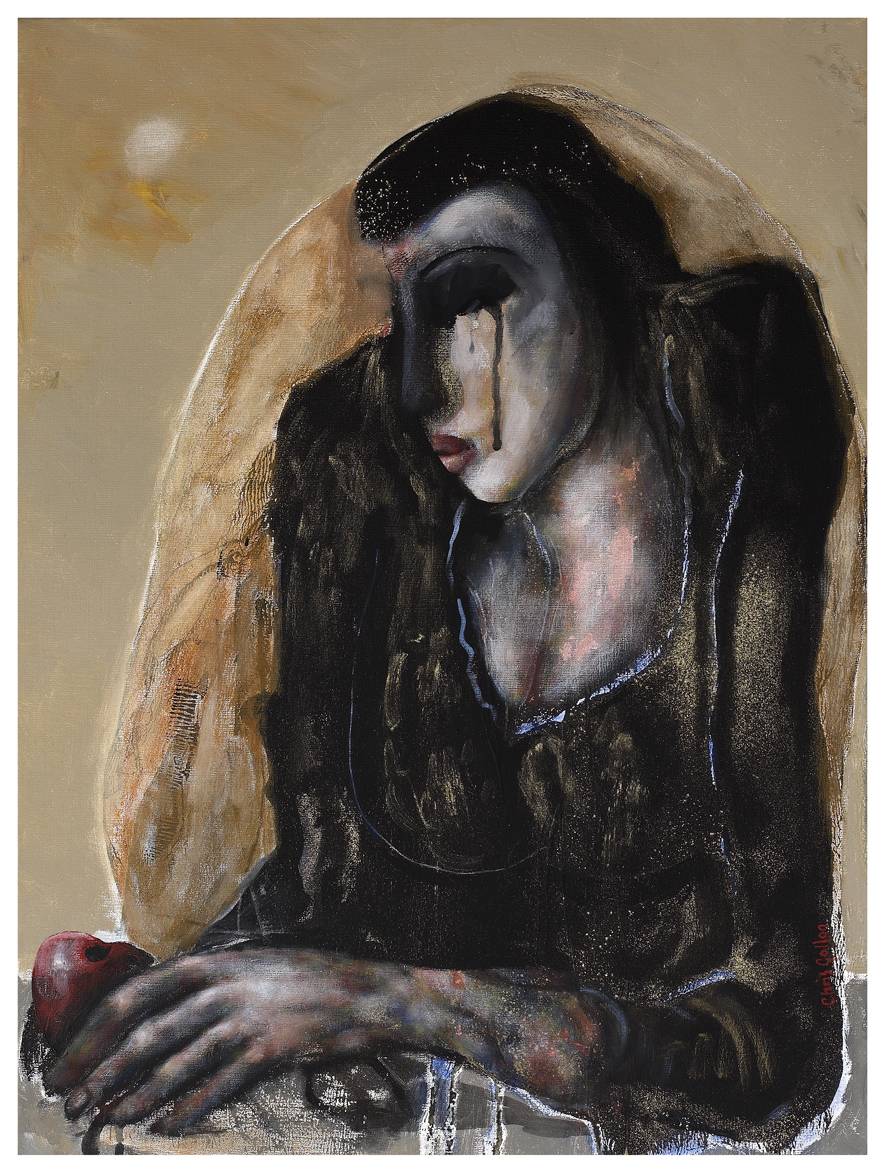
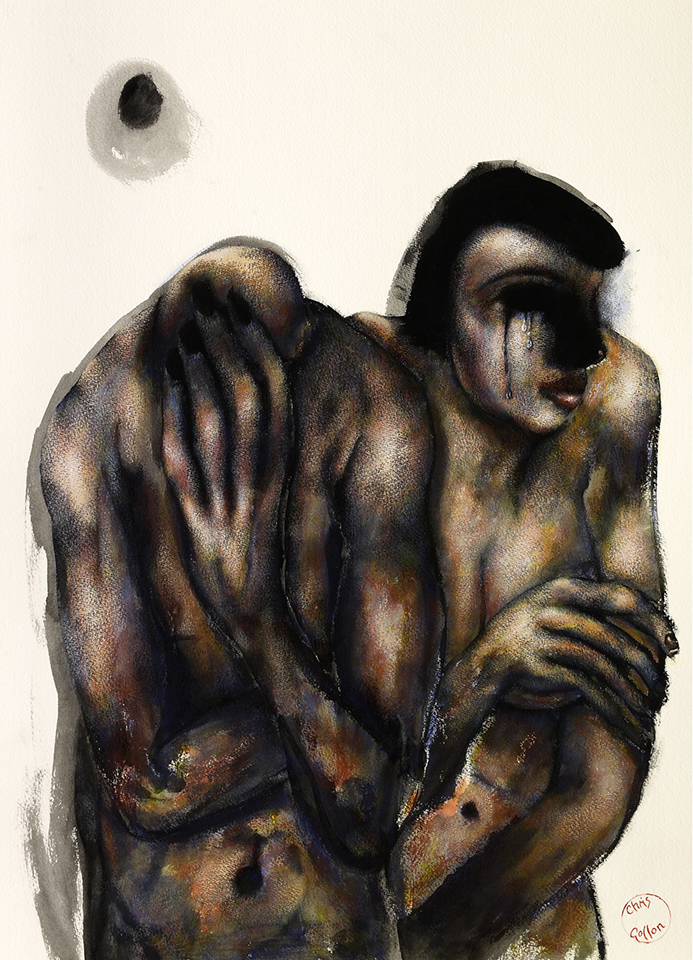
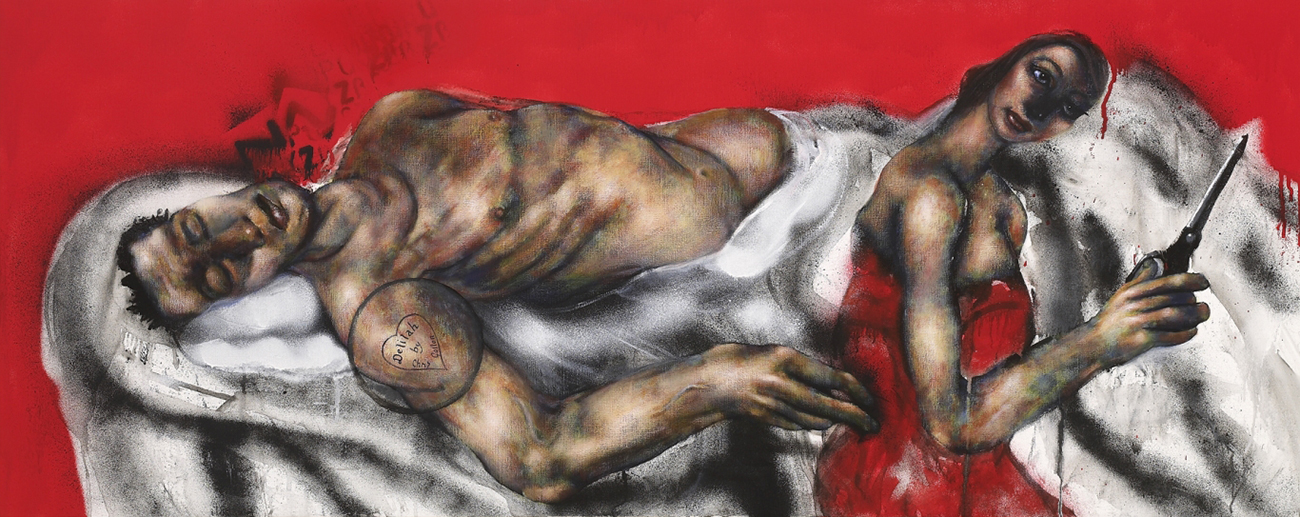

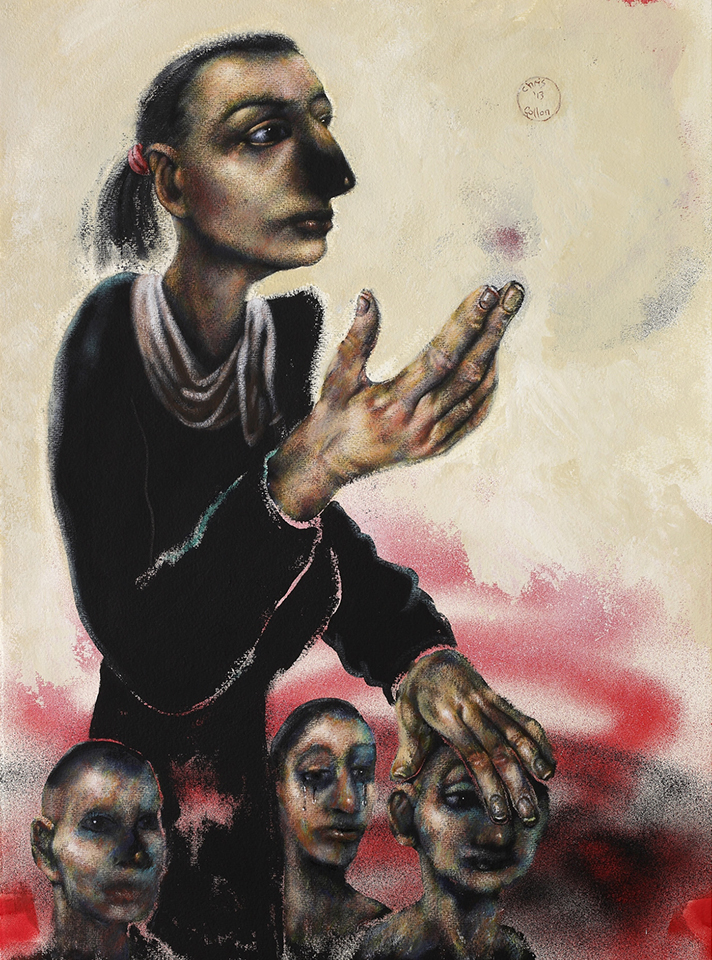
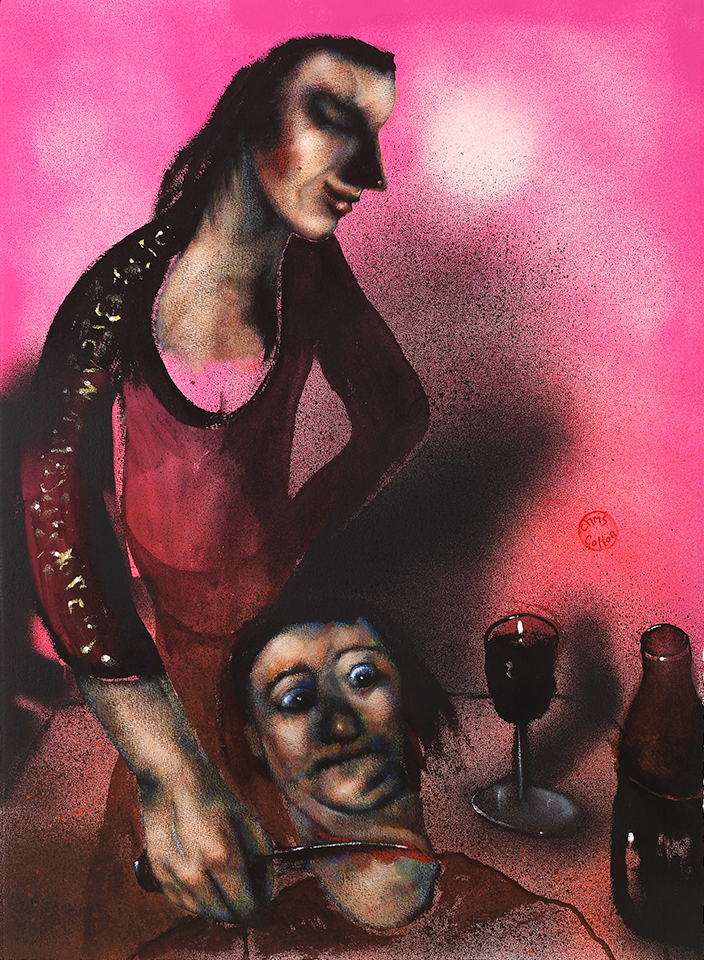
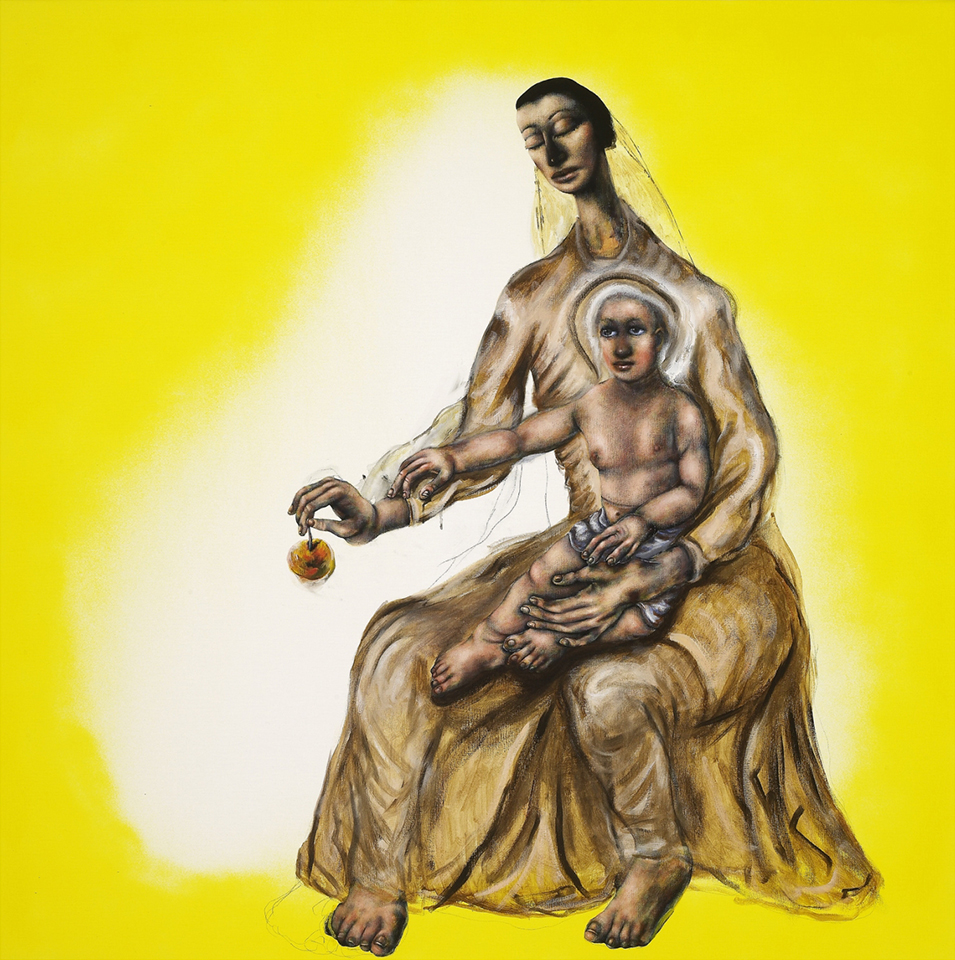
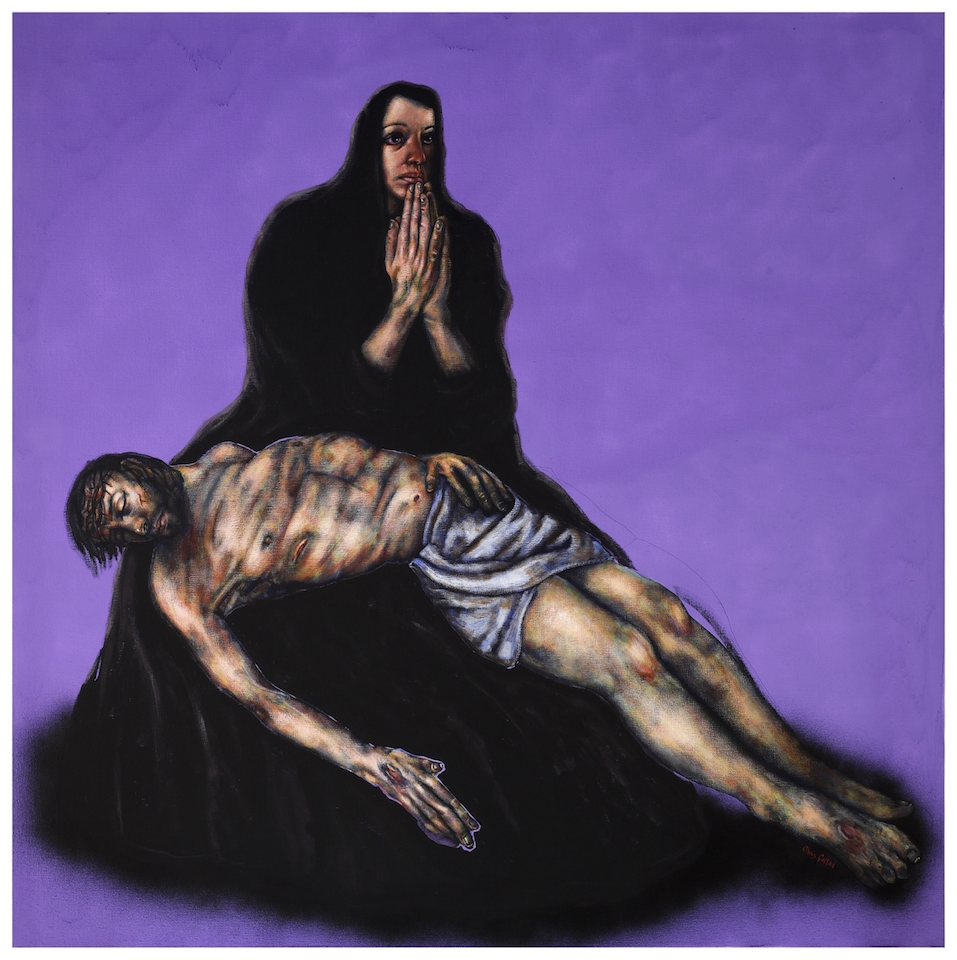
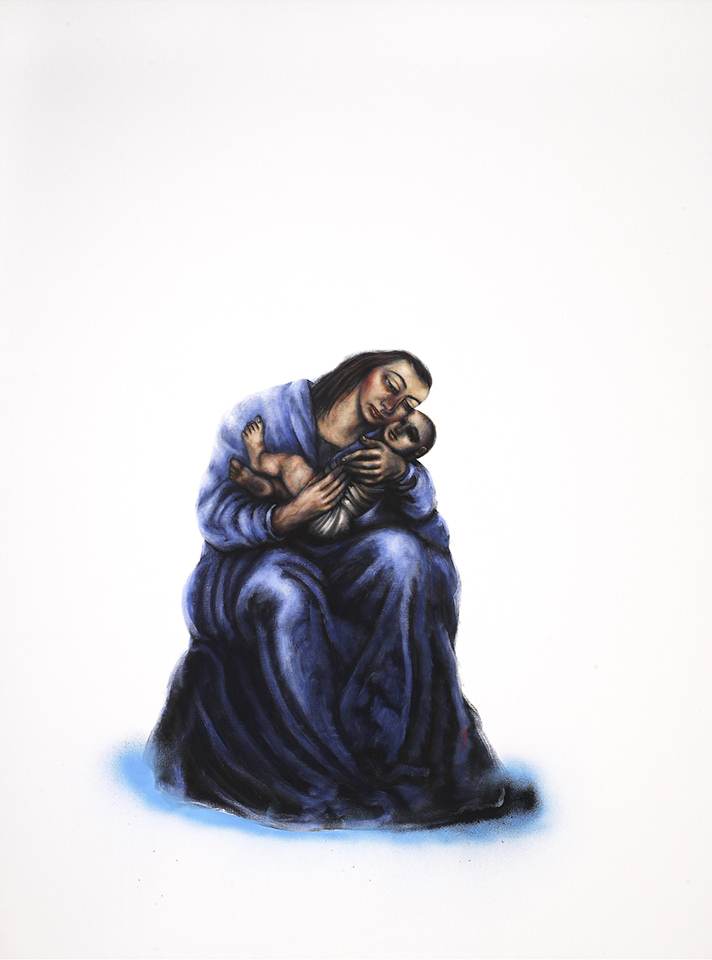
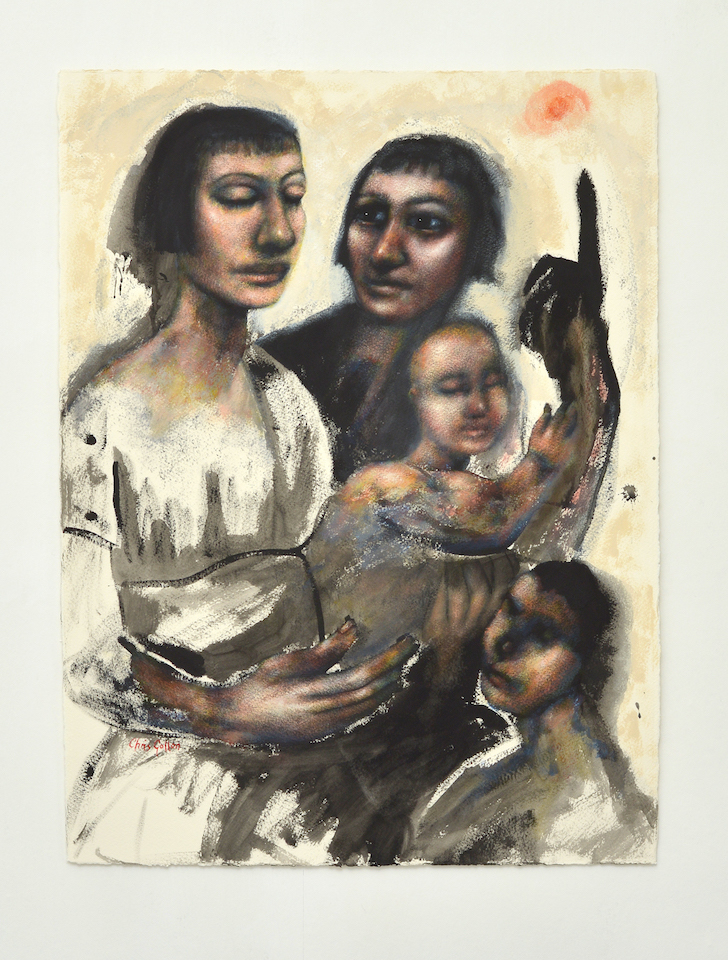
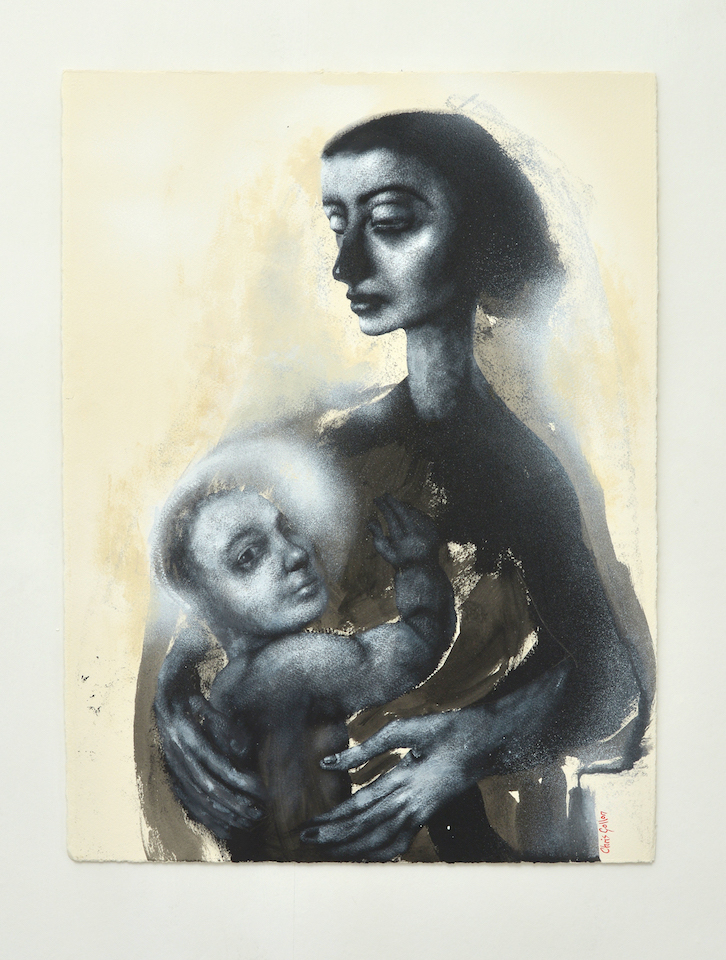
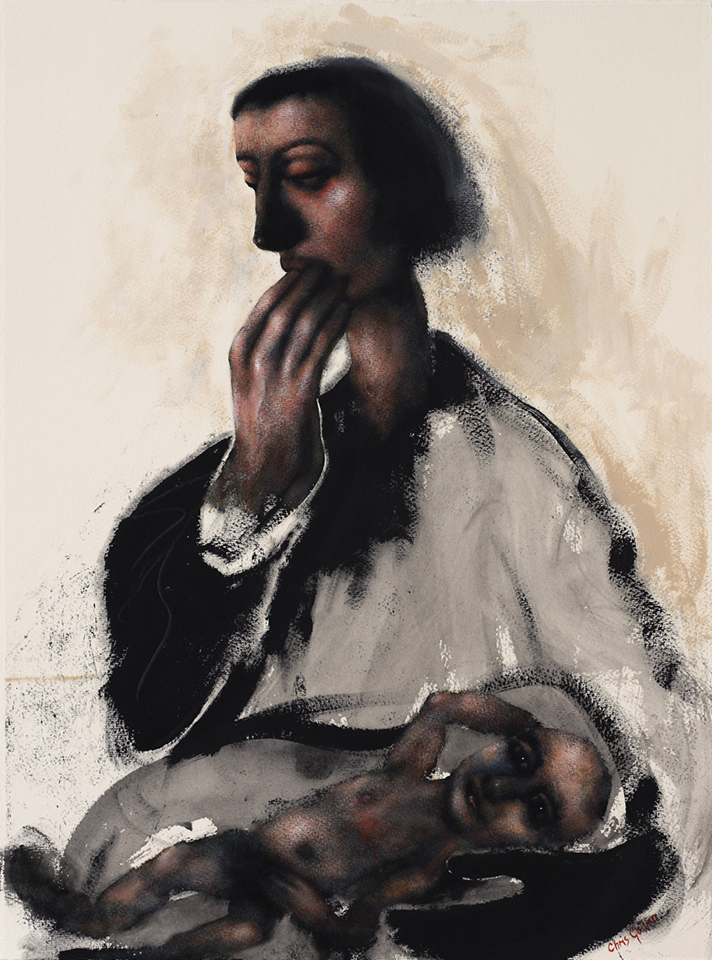

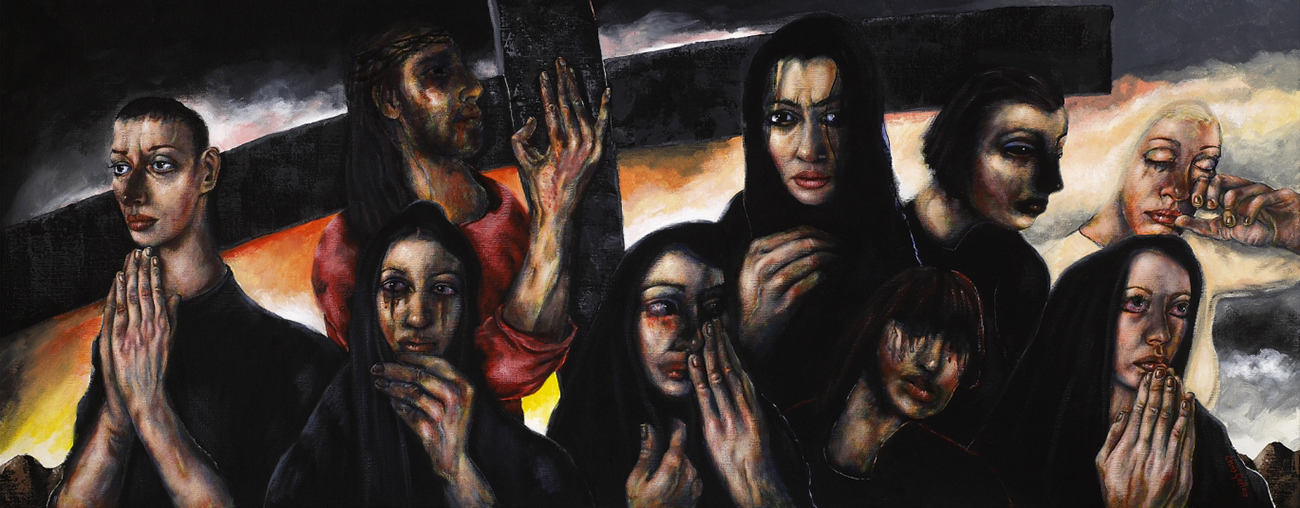
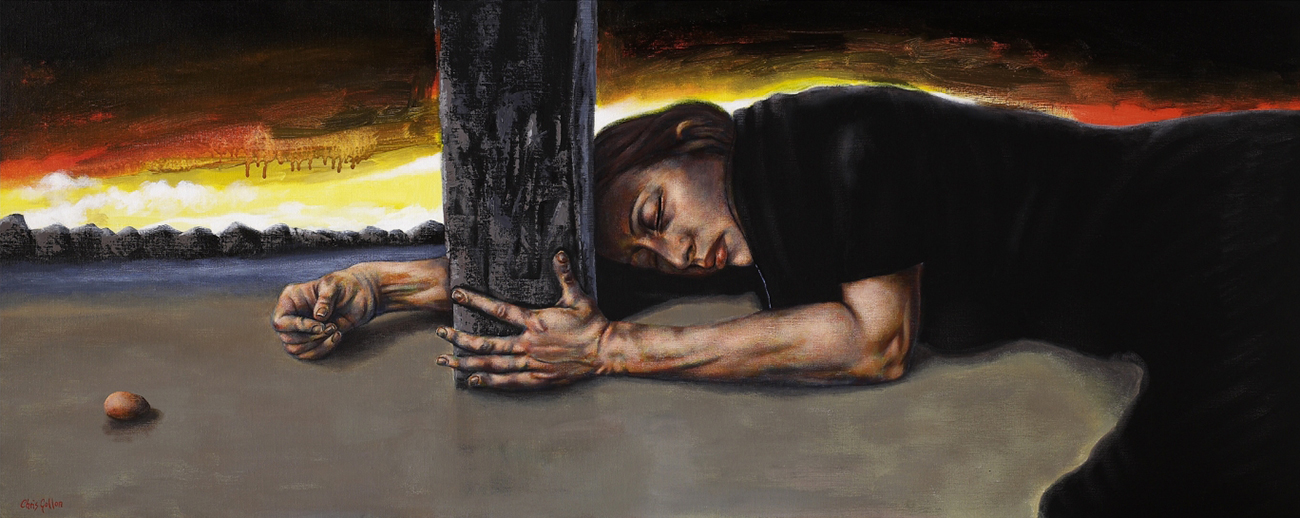
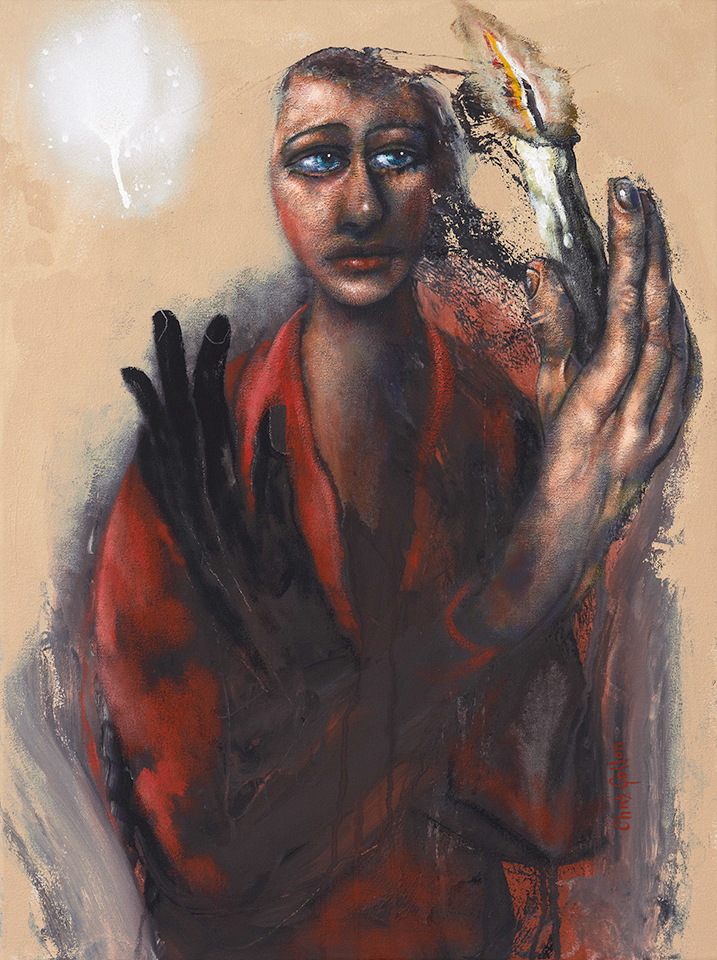
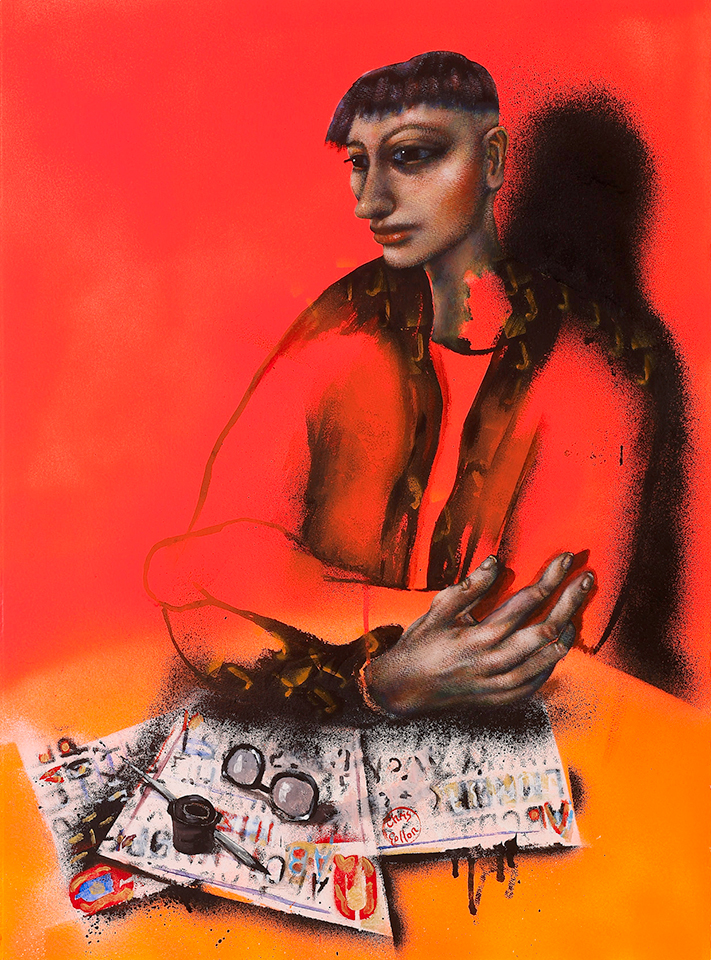
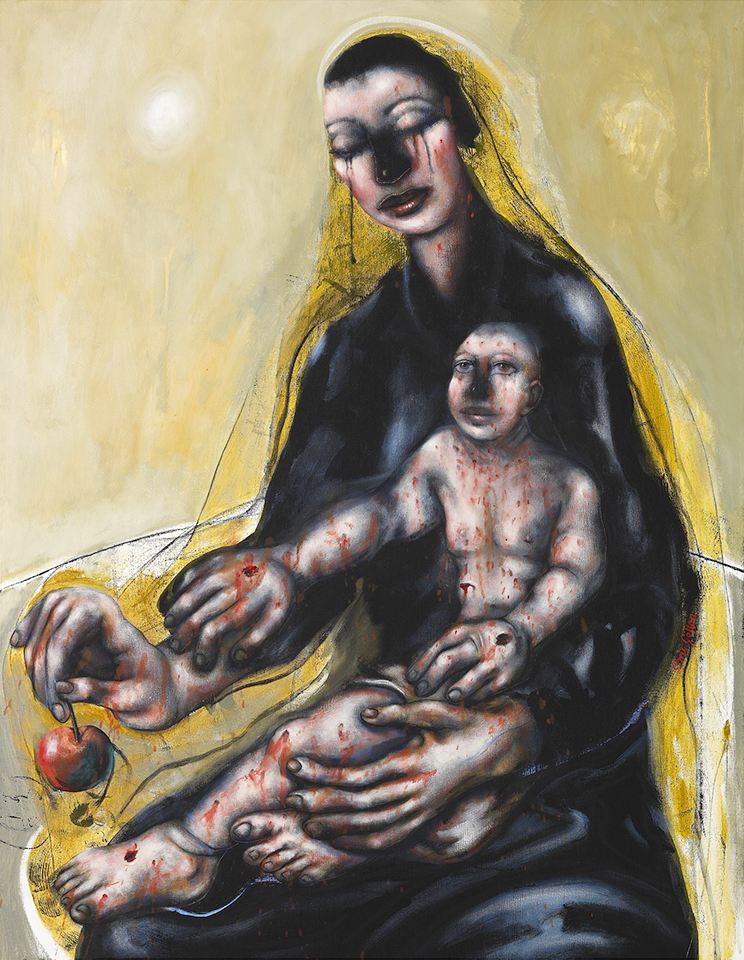
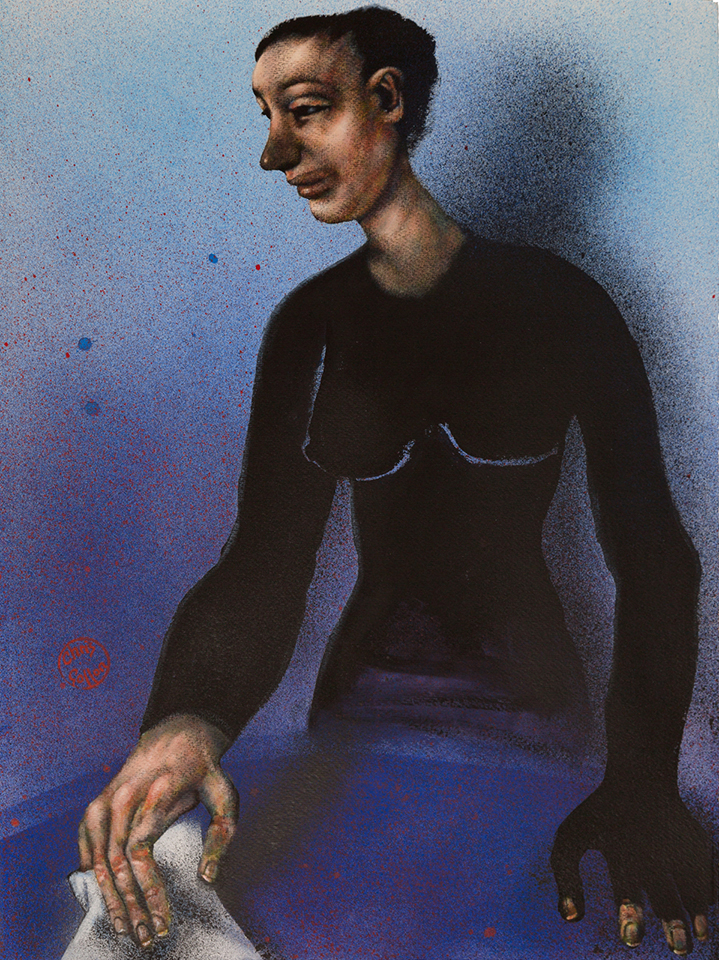
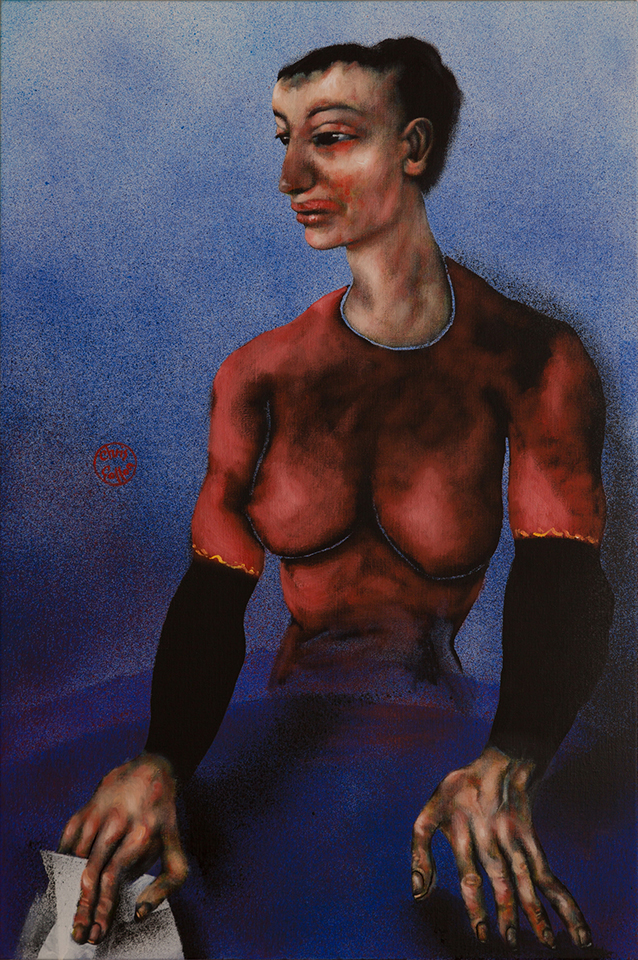
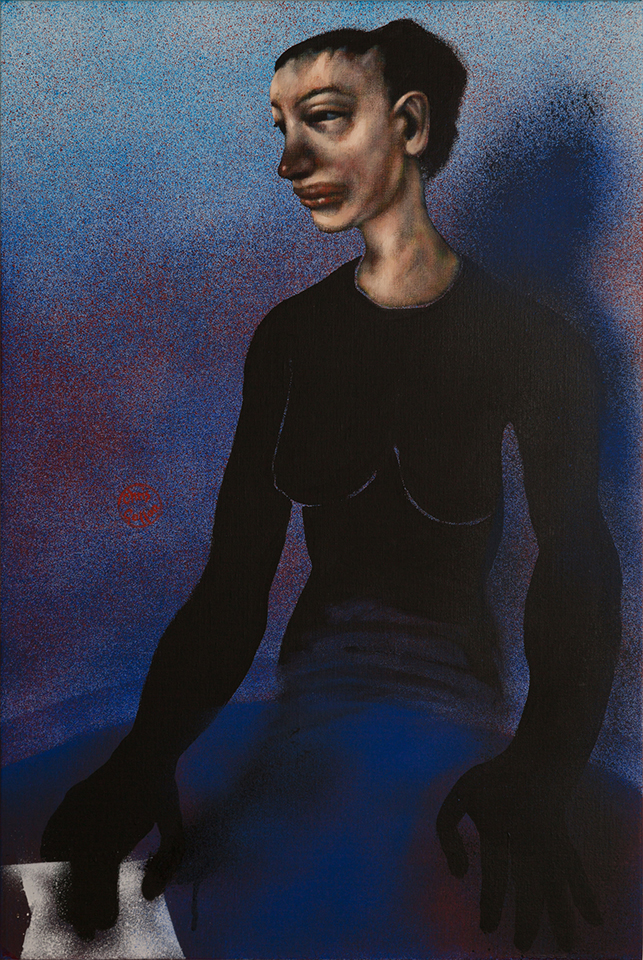
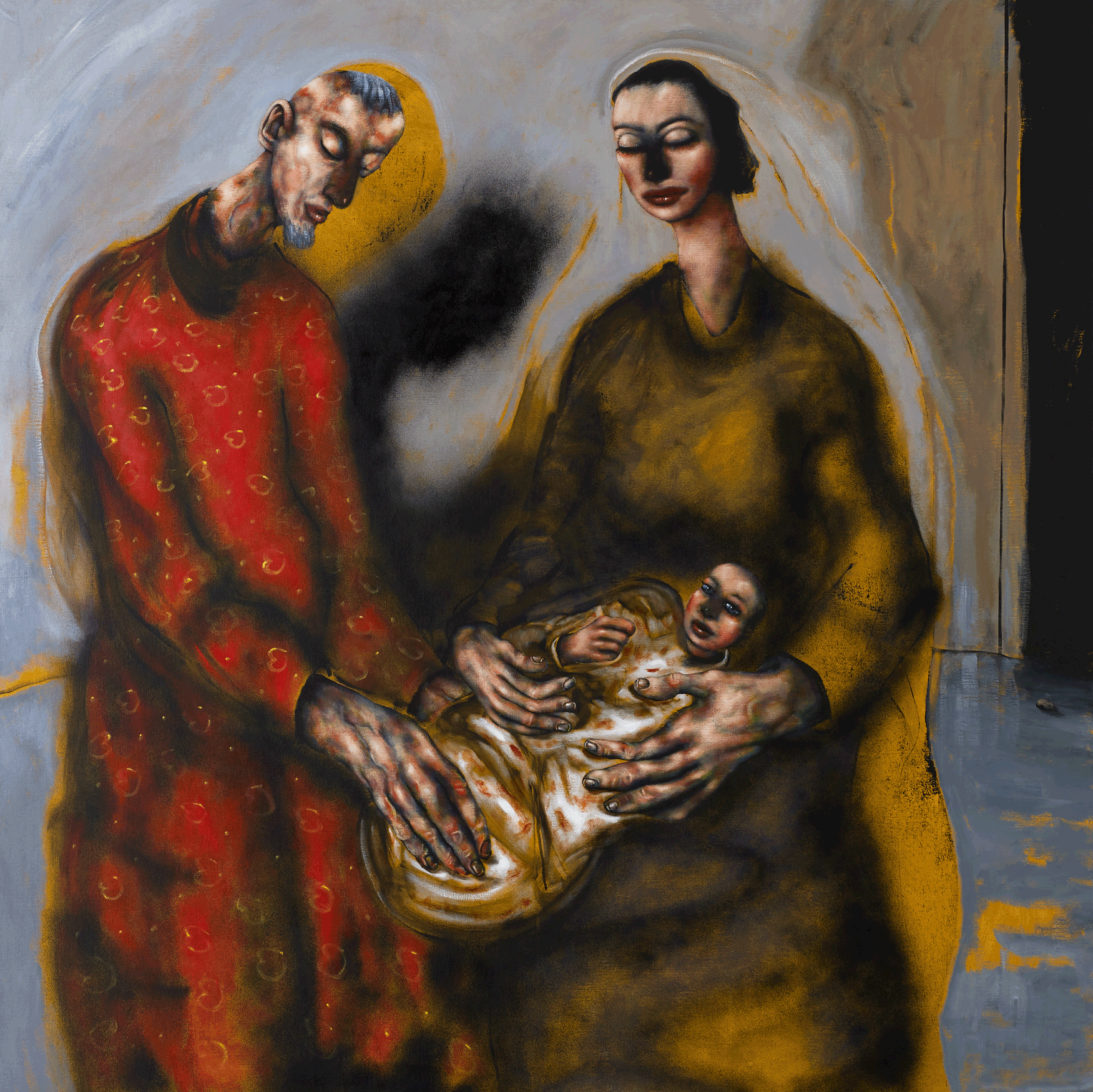
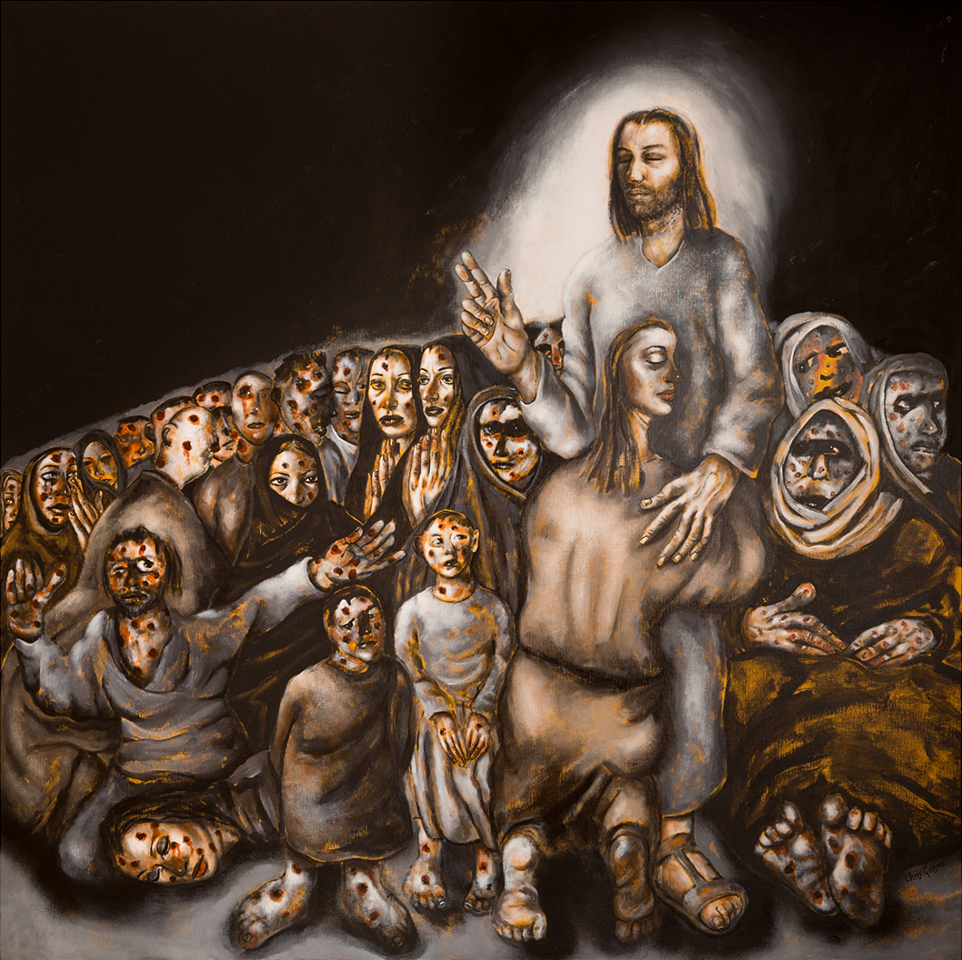
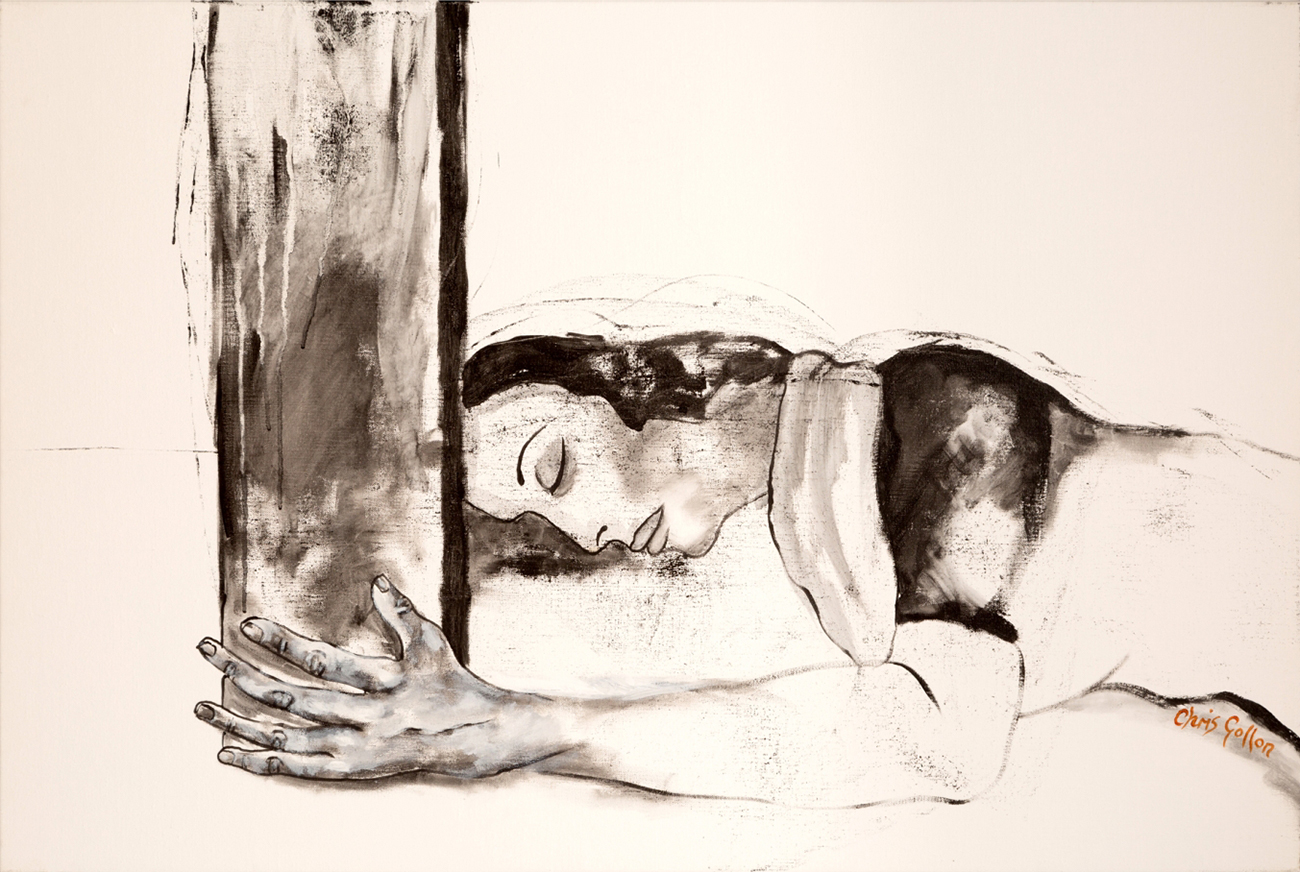
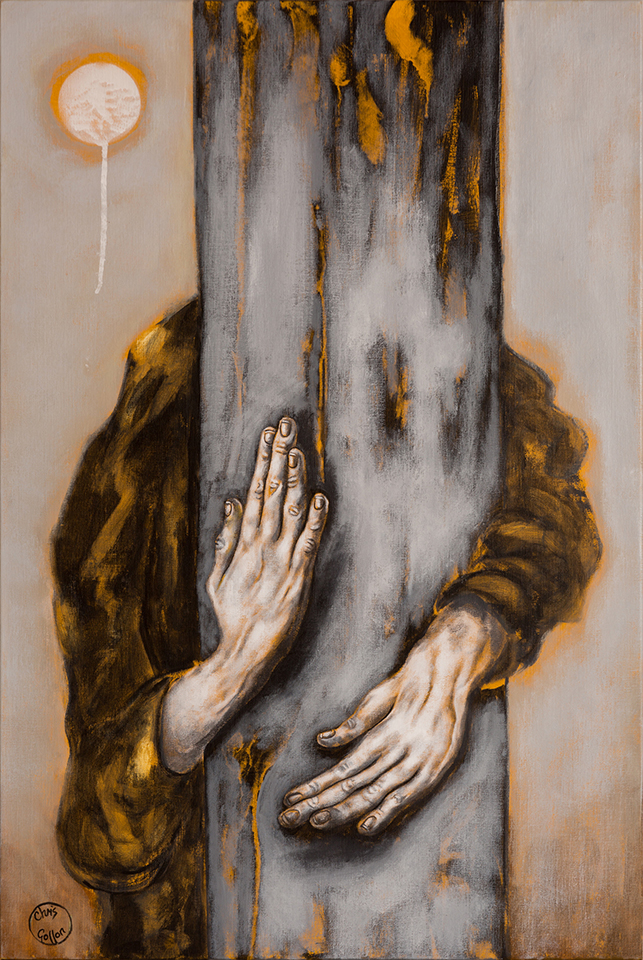
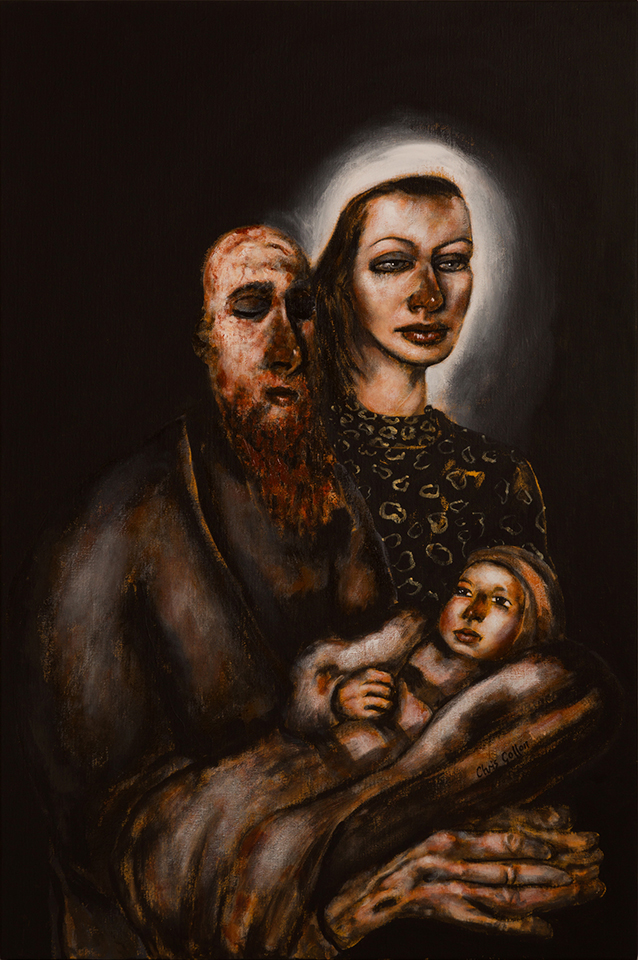
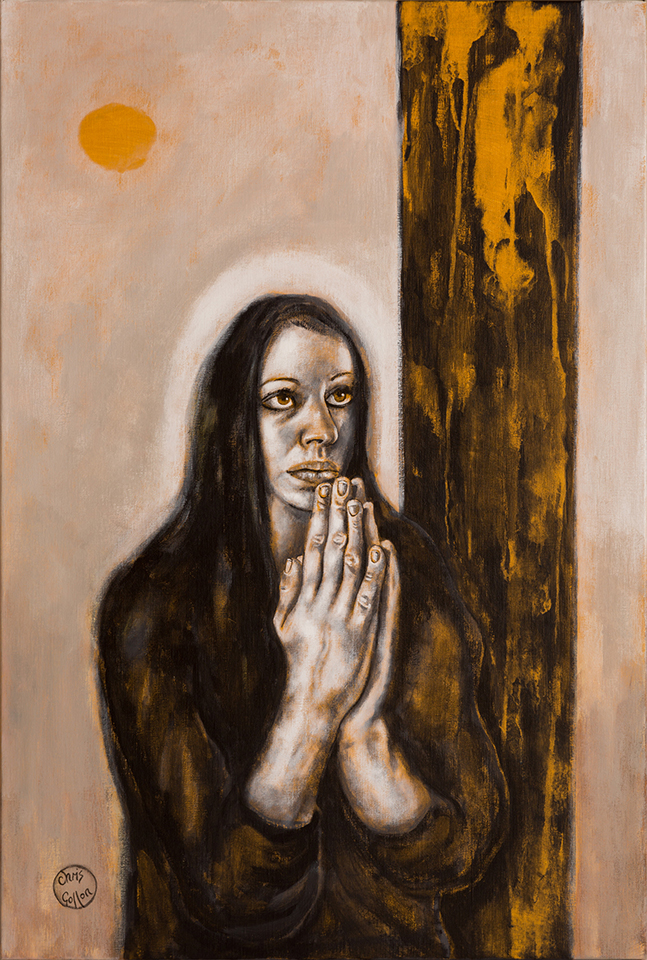
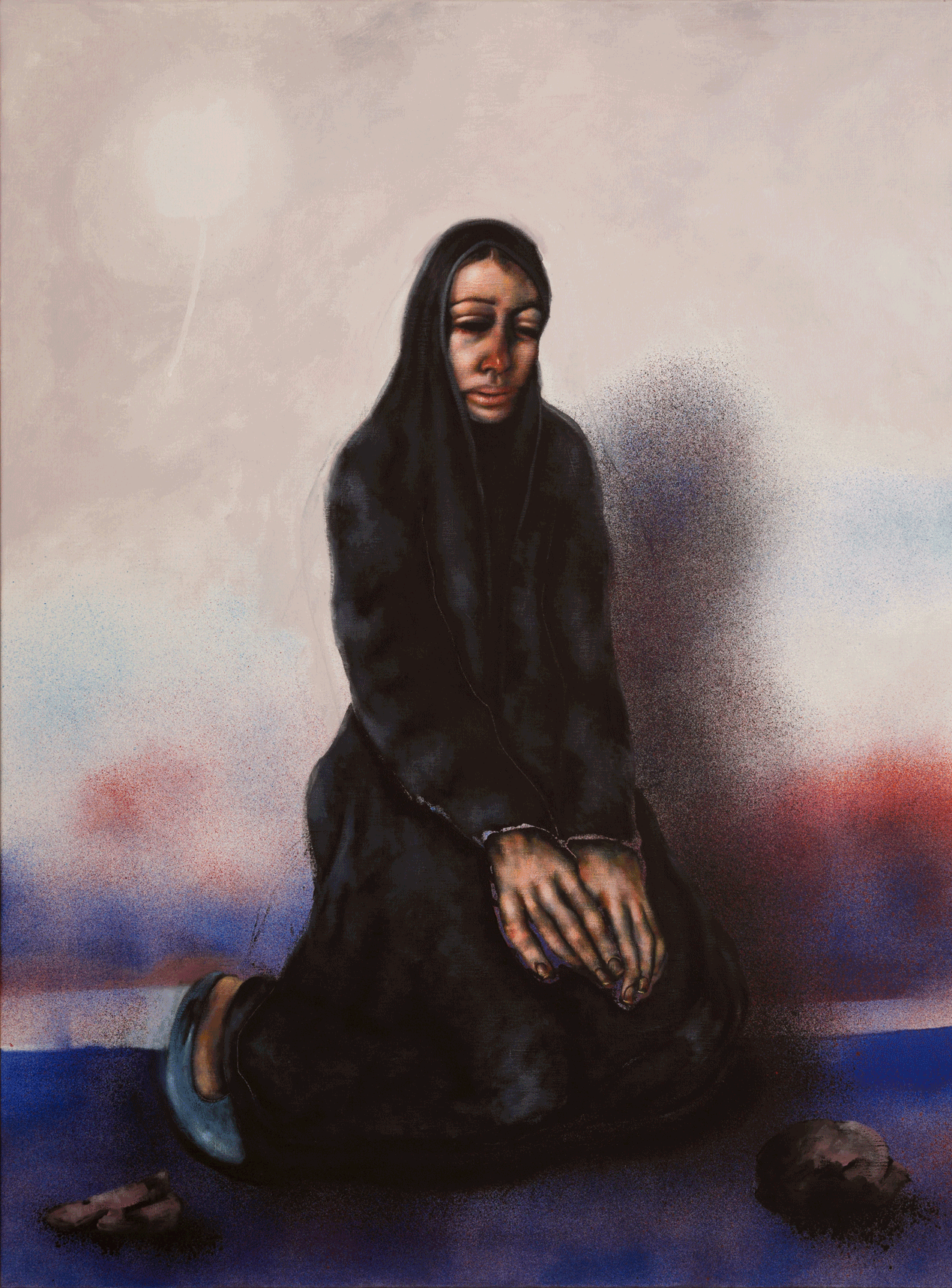
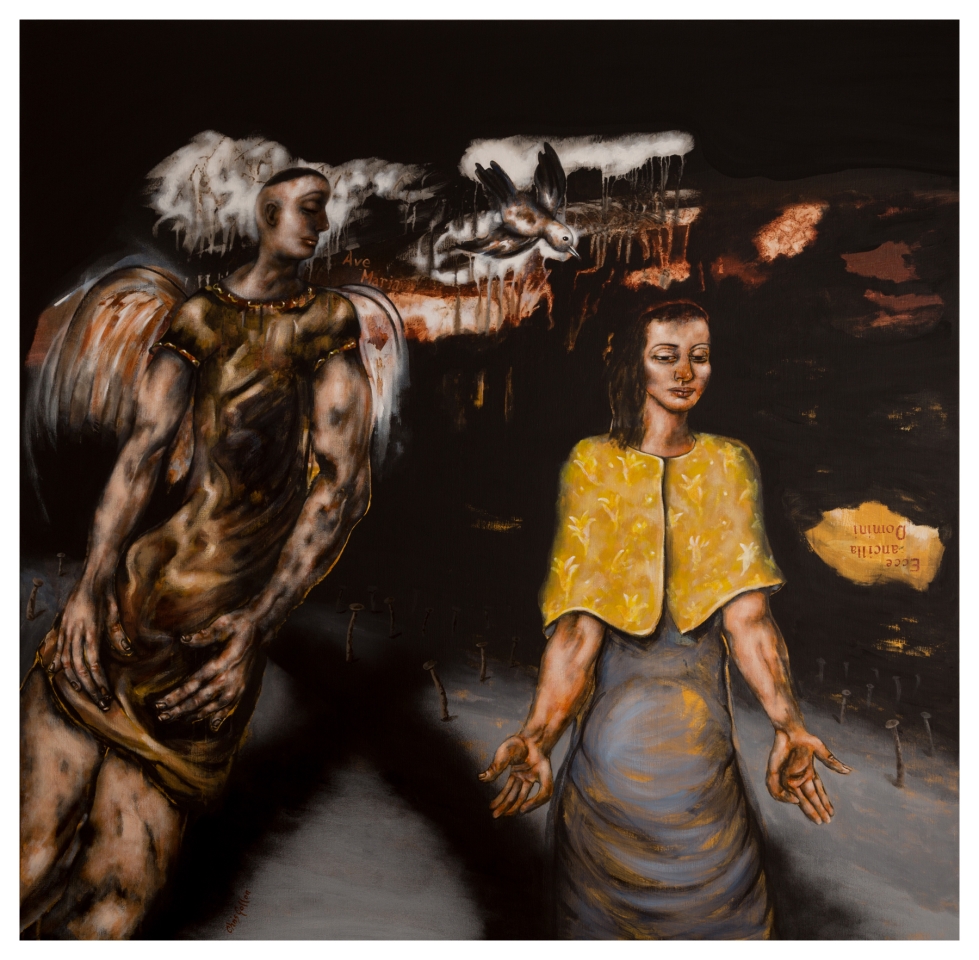
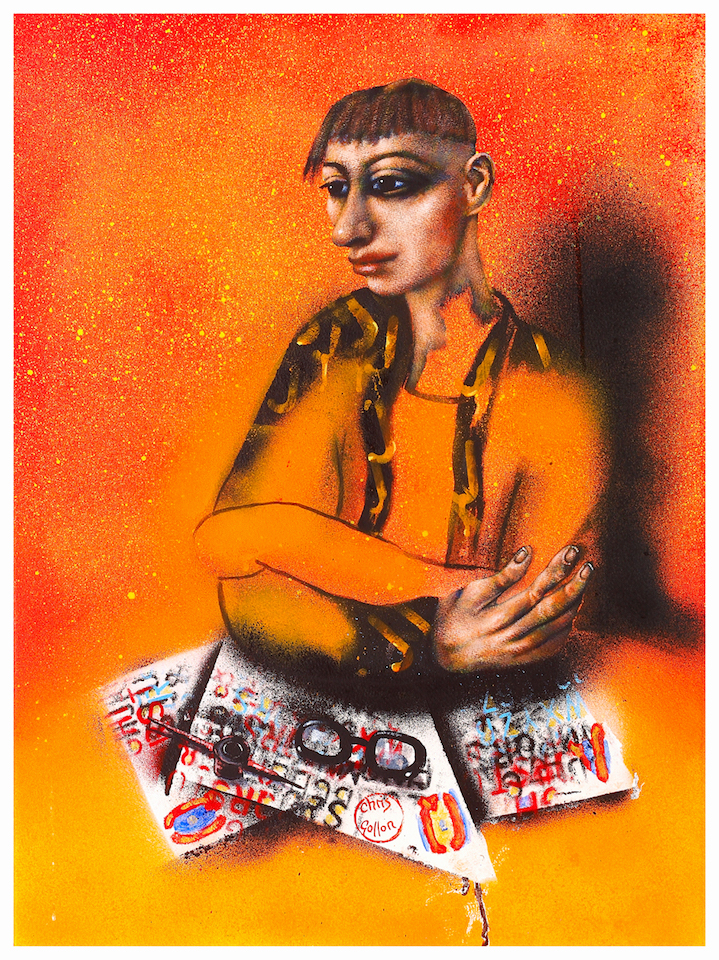
A national touring exhibition of paintings by Chris Gollon
This series of paintings explores the experiences of women in the Bible and began as a collection of seventeen paintings for a solo exhibition at Guildford Cathedral, in Chris Gollon’s home county of Surrey. Chris Gollon and novelist Sara Maitland attended the private view. The exhibition was accompanied by a full-colour catalogue with texts by award-winning novelist Sara Maitland, art historian and writer Tamsin Pickeral; the Revd Canon Dr Andrew Bishop and theologian Canon Dr Julie Gittoes. The exhibition caught the attention of the public and media nationally and become noted for its thought-provoking and innovative depictions of women. Such was public and press response, it then snowballed to become a national touring exhibition to English cathedrals in 2015-2016, touring to the cathedrals of Norwich, Chichester, Durham and Hereford. In autumn 2016, to coincide with the festival of St Ethelflaeda it travelled to Romsey Abbey.
The first seventeen paintings shown at Guildford Cathedral remained the core of the exhibition and appeared in the catalogue. However, to vary the exhibition at each subsequent cathedral Chris Gollon added new works. At Norwich Cathedral, after conversations with Canon Librarian Dr Peter Doll about how Mary had been viewed as a second Eve, he decided to exhibit his ‘Madonna of the Apple’, which he had painted in 2012 but never exhibited. For Chichester, having just read Carol Ann Duffy’s ‘The World’s Wife’ and following a conversation with Canon Chancellor Dr Anthony Cane, Chris Gollon became the first artist in history to paint Judas Iscariot’s wife. Unveiled at Chichester, Gollon’s painting ‘Judas’ Wife’ attracted much national media attention, since he chose not to imagine her as a money-grabbing woman just after the 30 pieces of silver, as depicted in early Christian writings; but rather as a woman imploding with grief as she grasps in one hand her husband’s suicide note, while also hearing news of the forthcoming Crucifixion. BBC broadcaster Clare Balding while interviewing Chris Gollon suggested he had managed to depict the sheer swollenness of grief, to which he replied “yes, she is almost beyond grief”. The first image of Judas’s Wife was in acrylic on paper. He then painted two more images of the subject in oil on canvas and acrylic on canvas. To see a national television interview with Chris Gollon regarding this image at Chichester Cathedral, click the first film here: Films .
In late summer 2015, Chris Gollon painted a powerful new triptych ‘Jesus Draws in the Dust’, created especially for the forthcoming Durham Cathedral exhibition. It was partially inspired by Rowan William’s book ‘Writing in the Dust’, which was the ex-Archbishop’s response to the September 11thattacks on New York . Gollon’s triptych captures the moment Jesus seems to stop time, and draws in the dust to still for a moment the mob’s anger, before uttering “He who is without sin cast the first stone”; but also captures the moment when Jesus is alone with the woman he has just saved from certain death by stoning.
At this time, Gollon was also developing his own grisaille technique. Instead of using black, white, brown and ochre, as Breughel had done in his ‘Death of the Virgin’; Gollon developed his own grisaille using only three colours: black, white and burnt sienna. This he used to great dramatic effect in his painting ‘Jesus Heals the Sick’, as well as in the right panel of the diptych ‘Giving’. The latter diptych was first shown in ‘The Art of Mary’ exhibition at Southwell Minster in 2016; but became part of the touring exhibition in it’s final venue of Romsey Abbey in autumn 2016.
Partially inspired by Carol Ann Duffy’s collection of poems ‘The World’s Wife’, from 2014 – 2016 Chris Gollon painted several works of unnamed, forgotten or unknown women in the Bible, such as Job’s Wife, the first woman to question God’s actions. He also painted several images of Bathsheba and one of Judith slaying Holofernes, casting himself as Holofernes. Visitors also encountered more well-known women such as the Magdalene, and also Salome, depicted just at the point where she sees the full horror of her actions. Gollon strongly conveys the bravery of the ‘Women of Jerusalem’, painting them with great psychological depth as feisty, brave and strong women. The artist was also keen to carry the theme beyond the Bible to include remarkable women who came later, such as St Lucy.
Chris Gollon’s ‘Annunciation’ was finished just in time to be exhibited as the touring exhibition came to Romsey Abbey in autumn 2016. As well as the last in-depth interview with Chris Gollon about his religious imagery, it is featured in author Mark Byford’s excellent book ‘The Annunciation: A Pilgrim’s Quest’ (Winchester University Press, 2018), along with interviews with Grayson Perry, Paul McCartney & Rowan Williams.
The exhibition celebrates the complexity of female experience in the Bible, and this series of paintings places women at the forefront of the Christian narrative.
To purchase the full-colour exhibition catalogue, click: Incarnation, Mary & Women from the Bible
From 2013 – 2015, Chris Gollon painted 4 versions of Julian of Norwich, the first appearing in the catalogue, the last being acquired by the University of East Anglia’s for its new Julian Study Centre. An excerpt from Sara Maitland’s foreword to the catalogue:
“…..more light heartedly, look at Julian’s spectacles. The first mention of reading-glasses comes from Florence in 1306 (in a sermon); Julian was born in about 1342 – so it is just about possible that she really did have a pair. But that is not the point: spectacles were associated early on with scholars. During Julian’s life time portraits were made of Cicero and Aquinas wearing spectacles (in some cases they were even added on to older –pre-spectacle-invention – paintings, as the recognised symbol of learning.) Julian was the first woman to write a book in English, the account of her ecstatic visions of God’s love. In giving her these neat pince nez, Gollon is claiming something for her – scholarship – not usually allowed to women, but from within a tradition that has no problem with symbolism.
These are not just powerful, beautiful and moving mages; they are also immensely subtle and profound engagements with two of the major historical strands of European iconography. They pull women into these dense webs of meaning in a way that is intelligent, truthful and deeply playful – in the most serious sense.”